A Little Bit of Manila in Taipei
Take a few steps toward the intersection of Section 3, Zhongshan North Road and Dehui Street (德惠街), and you will feel as if you’ve left the island of Formosa entirely. In a small kilometer-wide area squared off by St. Christopher’s Church (聖多福天主堂), King Wan Wan Shop Mall (金萬萬名店城), Shuangcheng Park (雙城公園), EEC Elite Express, and other neighboring facilities, the merchants and shoppers even speak a different language altogether here: Tagalog, the language of the Philippines. Otherwise known as “Little Philippines” in Taipei, it is a bustling center of activity for some of Taiwan’s most hardworking migrant workers, which they call “ChungShan.”
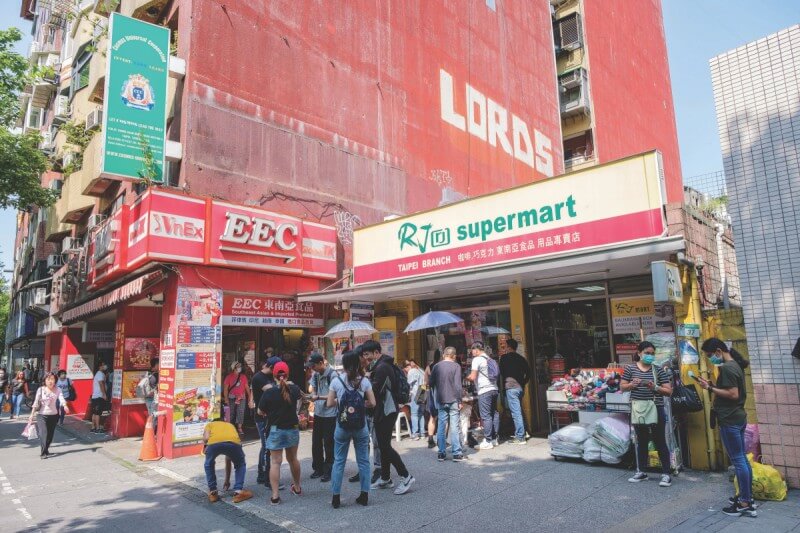
One in particular is Gilda Banugan, a domestic worker from Mindanao, the Philippines, who has called Taiwan her home for the past seven years. She visits Little Philippines on her day off every Sunday. “This is where we come every week to gather and meet with friends or discuss social issues,” she tells us with pride. But what exactly is this area about? Follow along as TAIPEI explores some iconic landmarks of Little Philippines. (Read also: A Reason for Migrant Workers to Stay)
St. Christopher’s Church
Constructed and designed in 1957 by an American architect, you could say that St. Christopher’s Church lies at the heart of Little Philippines. Originally built to serve the Catholic community of American military advisors residing in the neighborhood, it drew many Americans due to the availability of English Mass at the time. However, with the end of the Vietnam War and the subsequent change in diplomatic ties between Taiwan and the US, the neighborhood’s American community grew smaller and smaller over the years. Additionally, since the passing of immigration laws in the 1990s, Southeast Asian blue-collar workers have been allowed to work and reside in Taiwan, and the church eventually became the heart and soul of the Filipino religious community.
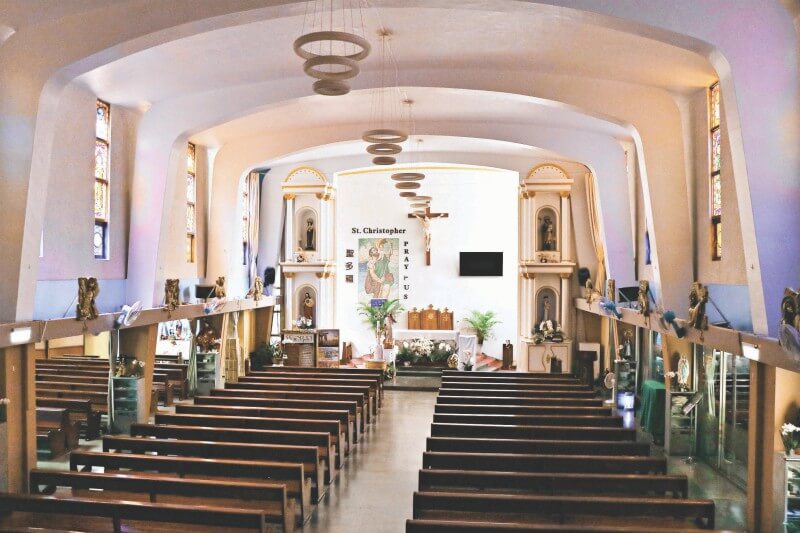
With services offered in Tagalog, English, and now even in Vietnamese, it’s easy to see why Southeast Asian migrant workers gather here. “Especially with the pandemic going on right now,” Gilda tells us, “the church offers free masks, hygiene classes, and even counseling since many of us can’t fly back home at the moment.” Unfortunately, several international travel restrictions have been applied due to the pandemic, so many migrant workers have chosen to stay in Taiwan for the duration of their contract for economic reasons. “Many of us are feeling especially anxious since COVID-19 is out of control right now back home, and we cannot get on a plane to visit our families. So, St. Christopher’s Church has really provided an immense level of comfort and support for us here.” (You might also like: Home away from Home: 6 Foreign Residents on Why They Love Taipei)
King Wan Wan Shop Mall
Just a stone’s throw from St. Christopher’s Church lies King Wan Wan Shop Mall. Upon walking in, the first thing you notice is a large wall display of shop signs in the two-story building. Here everything from cell phone shops, food stalls, hair salons, clothing stores, and electronics repair kiosks can be found. Shops display their products outside at the narrow corridor of the indoor shopping complex, with people talking to each other in Tagalog, walking through one shop after another. “In the past, before we had smartphones and other communication apps, we’d have to come here to send supports back home to the Philippines,” Gilda recalls. “Nowadays, it’s much easier because we can do everything online!” When asked about her own needs, Gilda shares, “I mostly come here to get a haircut or when I’m craving some local food from back home.” (You might also like: A British Barber in Taiwan)
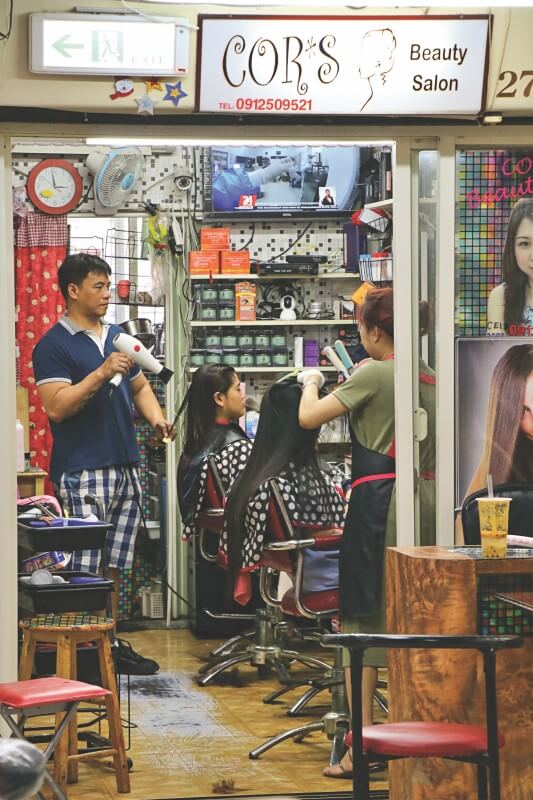
Upon our visit, Gilda takes us to a small food stall selling everything from fried bananas, smoked fish, sticky rice, and Filipino ube mooncakes to “Halo-halo” desserts — a type of Filipino shaved ice dessert topped with mixed fruits, ice cream, and corn. She even stops to say hello to a friend at the neighboring shop, referring to him as “kuya” or “brother” in Tagalog. We can’t help but notice everything in the shops is fairly priced, making their hard-earned money spread just a bit further here.
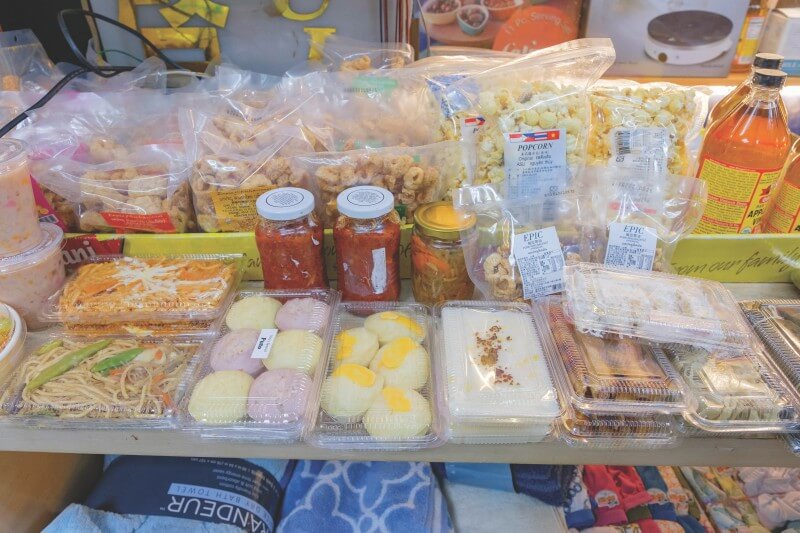
Neighboring Facilities
Adjacent to St. Christopher’s Church and King Wan Wan is a popular Filipino grocery store called EEC Elite Express. Inside the store, shelf after shelf is stacked to the brim with Filipino snacks, instant noodles, makeup, and even beauty products from back home. In order to save money, many of the products and household goods are sold in bulk, similar to what you would normally expect to find at wholesale stores like Costco. Interestingly, a counter right next to the cashier also allows customers inside to process cargo or boxed shipping, as well as other economic activities.
Not far from EEC is a Filipino restaurant, Wow Litson Manok (葛瑞絲香草烤雞). “Filipino food mostly consists of salty and sour flavors,” Gilda explains. “We really love our barbecue and fried foods, too. Here the most popular dish would be the grilled chicken.” An added bonus of enjoying a sit-down meal here is that the restaurant offers unlimited rice with any meal choice, helping migrant workers to get just a bit more bang for their buck.
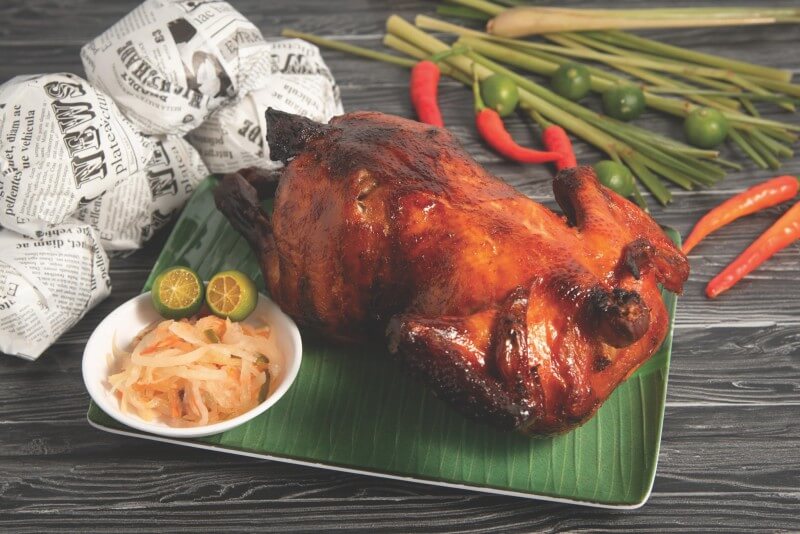
At the end of our short guided tour, Gilda takes us to another local favorite gathering place, Shuangcheng Park. “This is where we meet outdoors to talk about social issues or just to hang out and relax,” she tells us. Many of Taiwan’s Southeast Asian migrant workers are fighting to secure equal rights in Taiwan, so the park sometimes also serves as a meeting ground for them, as it is open and free. “Sometimes we’ll bring our food and have a picnic on the grassy lawn or benches,” she adds. “We really love the sunshine here!” she smiles.
“Since many of us have left our families and friends behind in the Philippines, this corner of Taipei really gives us a sense of connection and belonging. It really is our home away from home,” Gilda shares.
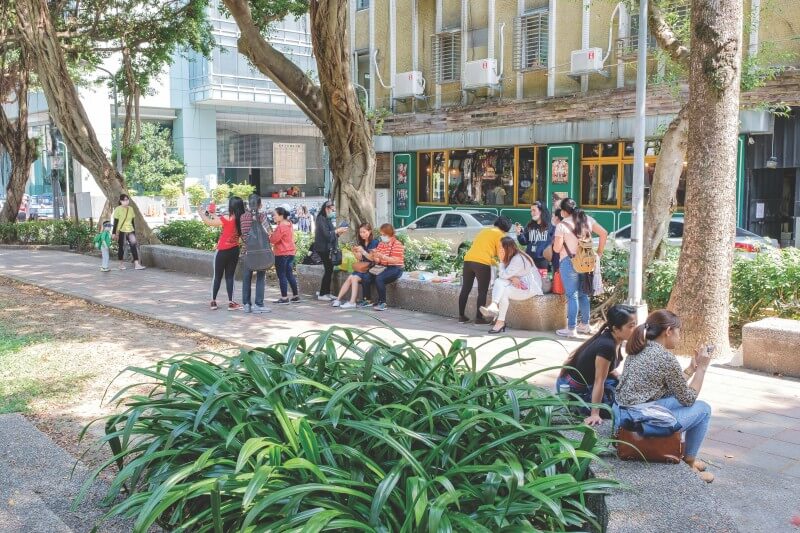
Taiwan’s Southeast Asian migrant workers really are the backbone of society, doing many of the vital jobs others are unable to do. The increasing diversity and inclusiveness of Taiwan has made the city a more friendly place for people from across the world to call home.
Author: Catherine Shih
Photographer: Yenyi Lin, Taiwan Scene, Wow Litson Manok
This article is reproduced under the permission of TAIPEI. Original content can be found on the website of Taipei Travel Net (www.travel.taipei/en).


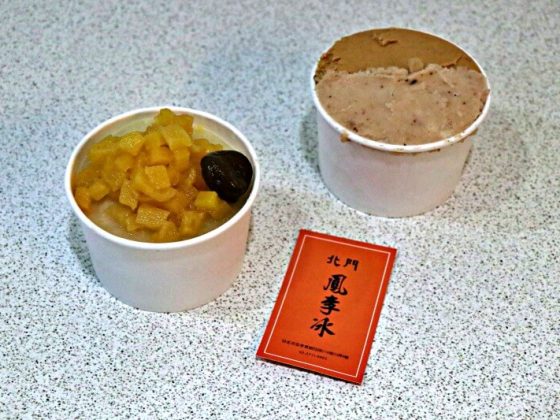










Comments are closed.